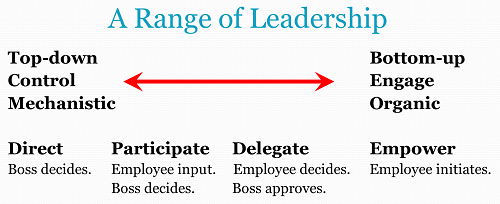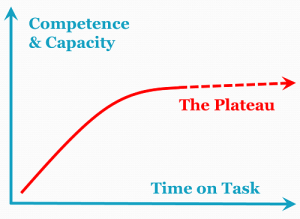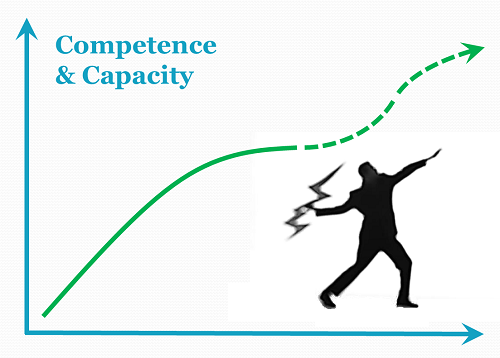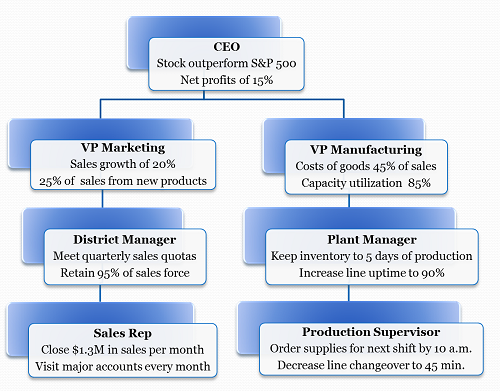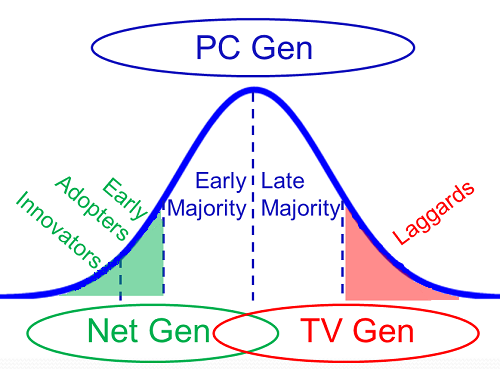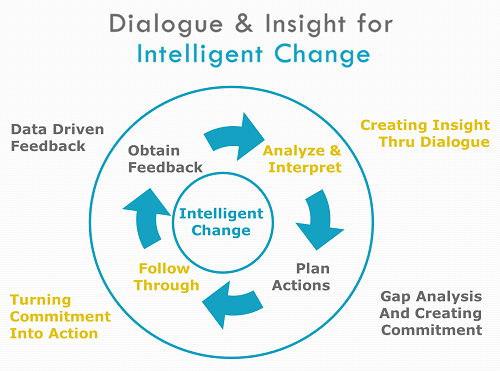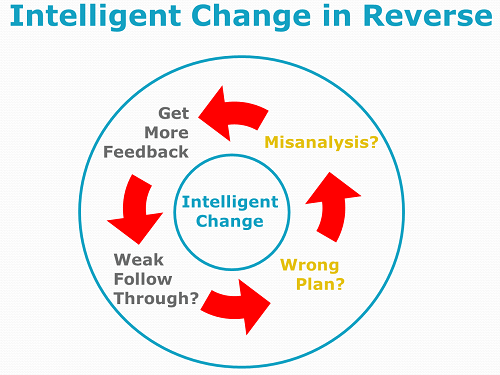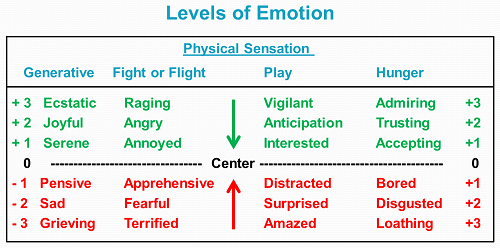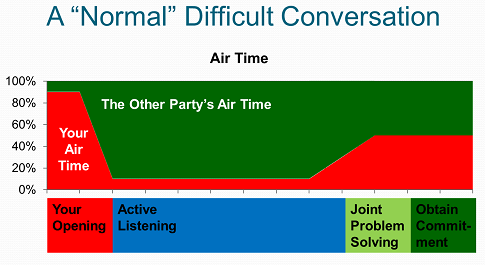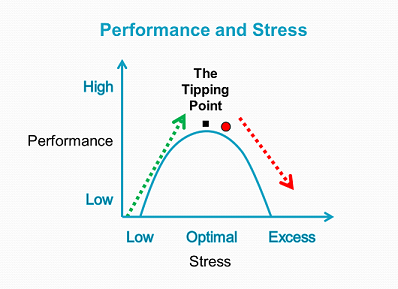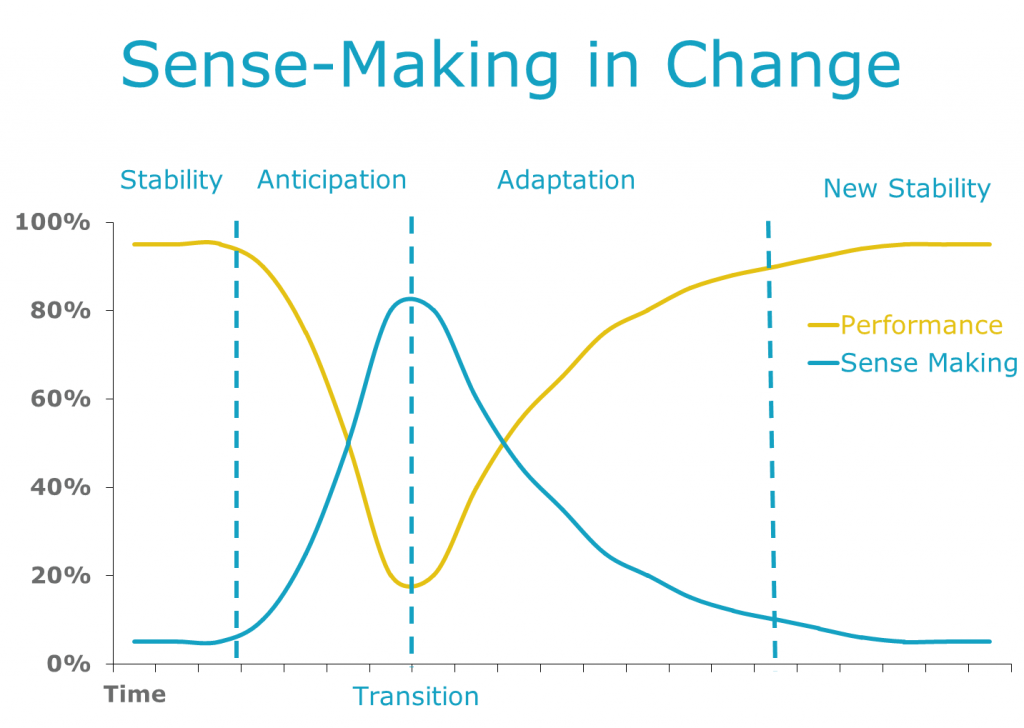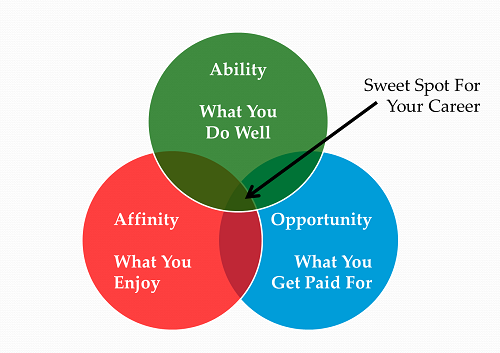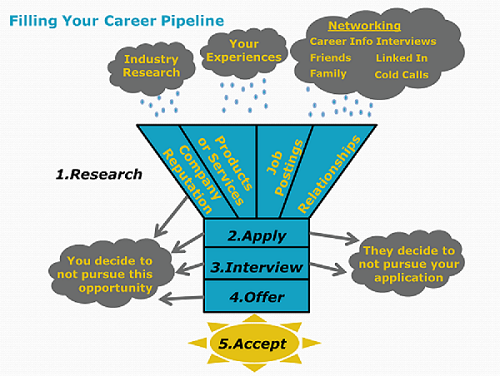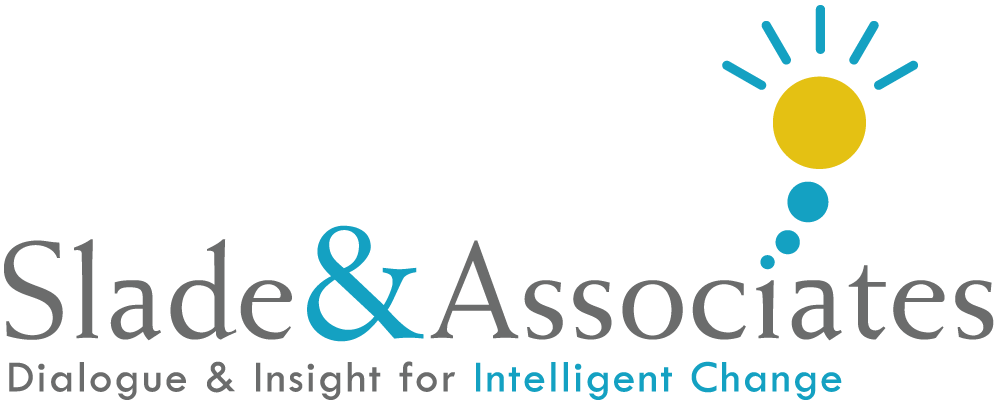When you walk in the room, who shows up for Read more →
Using the Tools of Leadership
Allen Slade
As a leader, it is not enough to have the job title. At the point of action, you need to choose the right tool for the job.
Leaders can’t operate on cruise control. Instead, they should will fill their leadership toolbox with a variety of tools: Task and person leadership. A variety of communication techniques. A range of decision making approaches. Verbal, quantitative and emotional intelligence. Macro and micro perspective. Fast or slow action. Problem solving and paradox managing.
 But you can mess up, even with a full toolbox. At the point of choice, you need to know which leadership tool to pick up. If you pick up a circular saw to cut hard to reach nails, don’t expect it to go well.
But you can mess up, even with a full toolbox. At the point of choice, you need to know which leadership tool to pick up. If you pick up a circular saw to cut hard to reach nails, don’t expect it to go well.
There is no simple how-to guide for leadership. While Amazon lists 86,941 books on leadership (and probably more by the time you read this post), be careful. The reality you face is more complex and subtle than obeying leadership laws or imitating newsworthy leaders.
Bottom line: You need to develop your own leadership insight through experience and the wisdom of others.
Leadership insight starts with personal experience. As you develop the ability to use a leadership tool, you will start to develop a sense of when that tool is the best choice. Maximize your growth by taking an intelligent change approach to your leadership experience.
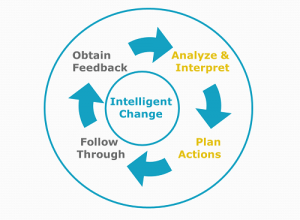 Risk-taking. Leadership insight starts with action – what’s called follow through in our intelligent change model. Excessive perfectionism will keep your shiny new tool in the box.
Risk-taking. Leadership insight starts with action – what’s called follow through in our intelligent change model. Excessive perfectionism will keep your shiny new tool in the box.
Feedback. Experience-based learning happens only with feedback. You need to know how the tool worked to know when to use it.
Reflection. It is not enough to experiment and to collect feedback. You must analyze and interpret your experience. Contemplating the what, how and (especially) the when of your successes and failures will help you figure out when to choose a leadership tool. To be accountable for reflecting on your leadership, try keeping a leadership journal or chat with your circle of trusted advisers on a regular basis.
The wisdom of others. You learn faster with help. Teachers, mentors and coaches are all valuable resources to help you figure out your personal theory of leadership. As leaders mature, they learn less from the expertise of teachers or the experience of mentors. From mid-career on, leadership growth requires finding your own leadership coach or executive coach. Ask your senior leader or HR person if your company can provide a coach for you.
Fill your leadership toolbox and develop your insight so you know what works. Then, you will be ready to grab the right tool for the situation.
The Leader’s Toolbox
Allen Slade
Before rebuilding our friends’ deck, I loaded my van with tools: 3 power saws, 4 drills, 3 measuring squares and a bucket full of hand tools. Why so many tools? Wouldn’t one saw be enough? The circular saw cuts fast and straight, but isn’t maneuverable. The sabre saw cuts straight or curved, but slow. The reciprocating saw is for demolition – maneuverable but leaves a jagged cut. The third measuring square was unnecessary, but every other tool was used repeatedly.
In Leading on Cruise Control, I suggested that the best leaders adjust to the conditions they face. As a leader, you need a variety of leadership tools and the ability to diagnose what tool is needed for the situation at hand. But tools come before diagnostic skill. If all you own is a hammer, then everything looks like a nail. Here is a partial list of tools that should be in every leader’s toolbox.
Task and Person Leadership. The ability to focus on task leadership – resource allocation, project management, goal setting and execution. And, the ability to build strong and mutually beneficial relationships.
Communication. One-on-one, small group and large group. Rhetorical persuasion, information sharing, story telling and listening. Requests, offers, negotiations, declarations and assessments. Management by walking around and the ability to influence from a distance.
Decision Making. Data-driven or political decisions. Optimizing or satisficing. The full range of employee involvement – Direction, participation, delegation or empowerment.
Fast and Slow. Strategic thinking and instinctive reaction. The ability to do exhaustive, multi-disciplinary long-range planning and the ability to leap before you look.
Intelligence. Verbal, quantitative and emotional intelligence. The ability to see the big picture and to edit the pixels. The ability to solve problems and to manage paradoxes. Principled moderation.
How do you add tools? Start treating every day as a leadership laboratory. Do many mini-experiements and get lots of feedback. Take every opportunity to try the new and different. Communicate differently – new groups, new approaches, new technology. Take every class you can.
Longer term, take on big challenges. Get another degree. Take on stretch assignments. Switch functions. Switch careers. Cross cultures.
 For an emerging leader, this list can be overwhelming. Be patient. It takes time to fill your toolbox.
For an emerging leader, this list can be overwhelming. Be patient. It takes time to fill your toolbox.
For a senior leader, you have many of these tools already. Don’t be satisfied. For the deck project, I could use a miter saw for the trim. Keep adding leadership tools.
How full is your leader’s toolbox? Don’t try to lead with duct tape and a pair of vice grips. Get the tools to do the job right.
Leading on Cruise Control
Allen Slade
One of the great conveniences of driving is cruise control. You can take your foot off the gas pedal and the car maintains speed. I recently drove 400 miles in a car without cruise control – in the rain, after a long day – and I was miserable.
For leaders, cruise control is also handy. You develop a leadership style that works. You build on past success. You lead with policies, procedures and patterns. You can drive the organization with relative ease, even in the rain after a long day.
There is a minor problem with leading on cruise control. You will not lead very well. As Skinner and Sasser conclude:
Managers who consistently accomplish a lot are notably inconsistent in their manner of attacking problems. They continually change their focus, their priorities, their behavior patterns with superiors and subordinates, and indeed, their own “executive styles.” In contrast, managers who consistently accomplish little are usually predictably constant in what they concentrate on and how they go at their work. Consistency . . . is indeed the hobgoblin of small and inconsequential accomplishment.
The best leaders, like the best drivers, adjust to the conditions they face. They know faster change is their only advantage, and they go slow to go fast. The best leaders can give the rousing speech, they can hold the quiet conversation and they can listen. The best leaders shift decision styles. They use the full range of leadership: direction, participation, delegation or empowerment.
Bottom line: The best leaders do not lead on cruise control. They adjust their leadership to the needs of the moment. They are versatile. They are inconsistent in order to gain consistently great results.
How versatile are you as a leader? Do you need a greater range of speed and style? Two suggestions:
Create a leadership scorecard to unlock your habits with data and reprogram your behavior.
Find out if your organization will provide you a leadership coach or an executive coach to help you identify opportunities to increase your flexibility.
Permanently disable your leadership cruise control. Lead according to the situation. It may be less comfortable, but you will be a better leader.
Coaching Yourself off the Performance Plateau
Allen Slade
A performance plateau occurs when you get complacent in your role. Feeling you have mastered the job, you slow down your personal development. The further you go in life, the more likely you are to find yourselve on a performance plateau.
In a post on pausing on the performance plateau, I suggested how leaders can help employees grow by providing new challenges, rotating work and cultivating openness to feedback. Today’s topic is even more important: As a leader, you need to watch for signs of plateauing in yourself - 3 years in role, no hunger for the next big thing, resisting change, defensive about feedback.
Has your competence and capacity grown much in the last year? If not, who can get you growing again?
Your boss may not think much about your growth. Many bosses focus on managing today’s performance, not coaching for future performance.
You can try to coach yourself off the performance plateau. Be warned. Self-coaching is difficult – lack of objectivity, limited performance enhancing creativity, blame-shifting and more. That’s why most elite athletes do not coach themselves.
If self-coaching or boss-coaching gets you off the performance plateau, great. If not, call for reinforcements. Call an accredited leadership coach.
A leadership coach will help you identify growth opportunities. A coach will help you be more open to feedback. A coach will help you create mini-experiments in how to lead and perform. And, a coach will help you notice your performance plateaus in the first place, sparking your continued growth.
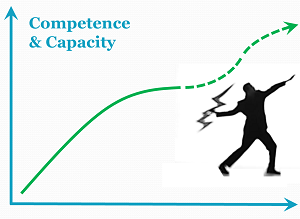 Bottom line: A leadership coach can provide the spark you need to get off the performance plateau. Then, you will grow your contributions to your organization. You will lead by example and spark your employees’ growth. And you will experience more personal satisfaction.
Bottom line: A leadership coach can provide the spark you need to get off the performance plateau. Then, you will grow your contributions to your organization. You will lead by example and spark your employees’ growth. And you will experience more personal satisfaction.
“In this world you’re either growing or you’re dying so get in motion and grow.” – Lou Holtz
Postscript for Senior Leaders:
Leadership coaching is not financially feasible for most employees. However, coaching has positive ROI for:
Leaders of leaders because of their current impact.
Emerging leaders because of their long-term potential.
Targeted first level managers in critical groups where failure would be costly.
Key individual contributors in high impact jobs such as sales reps for major accounts or hard to replace technical talent.
If you have a leadership coach, consider leveraging the power of coaching deeper into your organization. If you don’t a coach yet, get one or risk finding yourself stuck on the performance plateau.
Pausing on the Performance Plateau
Allen Slade
As you transition into a new job, sense-making takes time. Your performance suffers as you figure out the who, when, where and how of your new role.
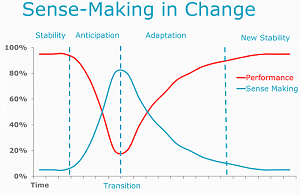 As time goes by, you adapt to the new situation. Your job becomes more predictable. As you enter the new period of stability, your sense-making lessens and the red line of performance flattens out.
As time goes by, you adapt to the new situation. Your job becomes more predictable. As you enter the new period of stability, your sense-making lessens and the red line of performance flattens out.
And that is when you must be most careful. Having mastered the new role, you can get complacent. Feeling you already know what you need to know, you can slow down your personal development. Your performance can get plateaued.
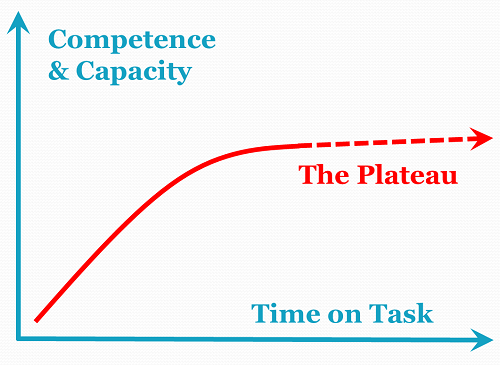 The further we go in life, the more likely we are to find ourselves on a performance plateau. Here are some warning signs:
The further we go in life, the more likely we are to find ourselves on a performance plateau. Here are some warning signs:
- Stays in the same role for three years or longer.
- Loses the hunger for the next big thing.
- Resists change actively and passively.
- Gets defensive about feedback.
As a leader, you need yo watch out for the plateau effect for your employee. Since the rate of economic change is accelerating, they must master new competencies and expand their capacity to work faster and longer. Faster change is their only sustainable comptetitive advantage. Otherwise, they will be replaced or drag your organization down.
Bottom line: Treat a performance plateau as a warning sign and take action. Here’s how to trigger growth to get your people off the performance plateau.
Add new challenges. If someone is great at sales, have them take on social media. If someone has mastered six sigma, ask them to apply it in another department.
Rotate roles. Don’t always give the task to the best person for the task. You may formally rotate jobs, even for people with decades of experience. On a smaller scale, rotate responsibilities. Have your experts work outside their specialties. The database guru can plan the next meeting and the meeting planner can build your new database.
Develop their openness to feedback. Openness to feedback is the single most important trait your employees can develop. If an employee has the defend/deny/delay response to constructive criticism, coach them in accepting feedback. You can open them up to lifelong growth.
Don’t be content with stable performance. Help your people get off the performance plateau. Trigger growth with new challenges, rotating work and openness to feedback. Then, you will prepare them to charge ahead into the future with an upward curve of competence and capacity.
Management by Objectives? Or Leading with Goals?
Allen Slade
Here is a simple recipe for a post on a leadership blog:
Are you doing bad things too much? Do good things more. You and your employees will prosper. Your comments welcome below. And follow us on Facebook!
Here are some leadership contrasts that fit the recipe:
| Bad Things: | Good Things: |
| Managing | Leading |
| Controlling | Empowering |
| Commanding | Engaging |
| Reacting | Anticipating |
If today’s topic is “Management by Objectives? Or Leading with Goals?” we probably agree that it is better to lead people than to manage objectives. As a society, we value leaders and leadership. That’s one reason I am a leadership coach, not a management coach.
Hang on, it’s not that easy. The best leaders are good managers, too. Empowerment requires controls (like accounting and scorecards). You need to engage, but in a fire, you need to command. And, you need to react to what no one could anticipate.
Bottom line: If you are a leader, you may need to use Management by Objectives. And, as a manager, you should Lead with Goals. Let’s take a closer look:
Leading with Goals is a powerful tool for influence. As a leader, have a goal setting conversation with each employee at the beginning of the year. Encourage them to set SMART goals. Use those goals for continuous improvement throughout the year. And use those goals as the focus of the performance review at the end of the year. Make sure each employee has at least three goals but not so many goals they are overwhelmed.
Management by Objectives is a bit different. In MBO, managers assign every individual a specialized set of objectives or goals. Performance reviews are conducted periodically, and rewards are given to individuals based on performance against goals.
MBO combines the motivational power of goal setting with the coordination power of strategy formulation. MBO systems create a cascading set of goals.
The CEO has goals that cascade to the VPs. Their goals cascade down through their functions. If all goals are met at one level (meet quarterly sales quotas), you should meet the goals at higher levels (sales growth of 20%).
So, which is better? Management by Objectives or Leading with Goals?
Research indicates that goals increase performance. When employees participate in setting their goals, they have higher commitment to the goals. So, with MBO, the top-down goals may undermine motivation somewhat. Leading with goals, so long as you use participative goals setting, will increase performance a bit more more. Still, top-down goals are better than no goals, so MBO is better than nothing.
Furthermore, MBO is better at cross-group coordination than purely participative goal setting. At the extreme, set-your-own-goals can lead to organizational chaos. If Marketing sets stretch sales goals, but Manufacturing sets quality goals rather than capacity goals, you may sell more than you can make. MBO provides the advantage of linking all goals to each other and to the organization’s strategy.
My advice to those at the top: Don’t think either MBO or Leading by Goals. Do both well. Maximize coordination power of MBO by linking goals throughout the organization while maximizing the motivational power of goal setting by engaging employees fully.
One way to do this is the double cascade. Strategy formulation starts at the top and is cascaded down. Then, all levels give feedback on the strategy. Next, preliminary goals are cascaded down. At every level, employees and managers sign up for SMART goals and give feedback up the chain. This extra round of two-way communication and coordination increases the quality of the decisions made and ensures that the resulting goals will gain traction throughout the organization.
For managers in the middle, your company either has management by objectives or it doesn’t. You probably have little say in whether goals are going to be cascaded down to you.
In an MBO organization, your key move as a leader is to act with integrity as you engage your employees. If you have been assigned goals by your leadership, let your team know. Empower them to help you find the best way to accomplish your goals. Find areas of wiggle room for them (often in the how and when of performance) so that they fully commit to your plan.
In a non-MBO organization, get your people as coordinated on goals as need be. If there is a high level of interdependence, do team goal setting. If there is some need for coordination, be the communication linchpin for goals. If there is little need for coordination, don’t waste your time.
MBO or not, you can lead with goals – SMART goals, goal-driven continuous improvement and goal-focused performance reviews – to maximize the engagement of your employees and the success of your organization.
Leading with Goals
Allen Slade
Goal setting should be one of the most useful tools in your leader’s tool box. Goals can drive intelligent dialogue about performance with your employees, leading to greater success and satisfaction for your employees and your organization. Here are some ways you can use goals to lead more effectively.
 Use goals to set a benchmark for performance. A goal setting conversation should kick off the performance planning cycle – the what, when and how of performance. Help your employees set SMART goals: specific, measurable, actionable, realistic and time-bound.
Use goals to set a benchmark for performance. A goal setting conversation should kick off the performance planning cycle – the what, when and how of performance. Help your employees set SMART goals: specific, measurable, actionable, realistic and time-bound.
Engage employees fully in setting goals. Employee involvement creates more commitment to follow through. Don’t feel you have to mandate goals for your employees to prevent slacking. Research shows that most employees set challenging goals. Trust your employees. Treat goal setting as a dialogue rather than a top-down mandate. The goals that result will work well for you and your employees.
Make sure each employee has the right number of goals. Three goals will work well for many entry-level jobs. A retail sales person might have goals for sales volume, customer satisfaction and maintaining a clean sales area. A new manufacturing supervisor might have goals for production, quality and cost.
As an individual gains responsibility, the number and complexity of goals will increase. Use your goal setting conversations to lift their eyes to the new horizon. A new leader may be taking on people management for the first time. Help them set their own leadership goals. A new general manager’s goals need to be cross-functional and integrative. Help them set goals on profitability, innovation or stakeholder relations.
During the year, goals allow continuous improvement. Help your employees use data to unlock their habits. Just as you should have a leadership scorecard, encourage your employees to build a scorecard with metrics for their goals. Then, you can check in periodically to help overcome any blockades to performance.
At the end of the year, use goals to review performance. If goals have been the benchmark for performance and driver of continuous improvement through the year, the performance review should be straight forward. If an employee is not meeting their goals, you will need to manage the employee up or manage the employee out. You can focus on the required improvements, get specific about what changes are needed and (in the extreme) set a deadline for measurable improvement. However, if you lead with goals, most of your employees should be performing well. You will celebrate success together and renew the goals for next year.
Bottom line: As a leader, have a goal setting conversation with each employee at the beginning of the year. Encourage them to set SMART goals. Make sure each employee has at least three goals but not so many goals they are overwhelmed. Use their goals for continuous improvement throughout the year. And focus on performance against goals at the end of the year.
Help your employees get their goals right. If you lead with goals, your organization and your employees will benefit.
Leading Change for the Net Gen, PC Gen and TV Gen
Allen Slade
In a post on Digital Deception Detectors, I contrasted two views of technology:
The Net generation integrates technology fully with relationship. They adopt new technology for coolness, using Facebook (or Twitter or Pinterest or whatever) because their friends do. Using a network multiplies their friends on the network.
The PC generation sees technology as a tool. They master new technology to get things done. They aren’t early adopters. They won’t upgrade Windows or switch from email to Facebook without a good reason. They want a tested version of new technology, with no bugs and a good help function.
Here’s a third perspective:
The TV generation passively accepts what technology offers. They change the channel or dial the phone, but they allow other to create the channels and content. If technology does not work, they look for an expert or give up. They tend to be late adopters, mastering new technology under direction or duress. Once they have mastered a technology, they use it habitually.
Geoffery Moore categorizes people by how quickly they accept new technology – from early adopters to laggards.
The difference between Net, PC, and TV generations is not necessarily how quickly people adopt new technology. The difference is how and why people use technology. The Net gen asks “What’s cool? How can I connect to friends?” The PC gen asks “What works? How can I get stuff done?” The TV gen asks “What’s on tonight?”
As a change leader, how should you interact with the three generations?
The Net generation treats technology as a natural part of life. They can be the easiest to lead becasue they are are comfortable with technology change. However, they can be cynical about large organizations and their leaders. Their digital deception detectors are tuned for any sign of inauthenticity.
Microsoft’s old advertising slogan “Where do you want to go today?” worked well with the PC gen, but the Net gen’s reaction was “Riiight. Bill Gates, the richest man in the world, wants to help me accomplish my goals.” Trip their digital deception detector and you’ll lose the Net gen.
The PC generation has a utilitarian relationship with technology. They would rather not upgrade to the latest version of Office or change from email to Facebook unless there is a good reason. When getting their buy-in, leaders should focus on the great things they can do with the new system.
When we converted to a new web-based survey system at Ford Motor Company, our audience of executives and HR professionals were largely PC gen. Our key message: Better, Faster, Cheaper. We reduced turnaround time and costs, music to the ears of the PC gen.
The TV generation has a passive relation with technology, expecting to absorb what is transmitted. They can resist learning new technology that requires their active involvement. The TV gen may require a lot of persuasion, to the point of coercion.
One of my colleagues launched an executive information system restricted to vice presidents (no executive assistants allowed). One third of the vice presidents never logged on. They want their reports delivered to them, like turning on the television. The CEO decided to guide the non-users to leave the company as soon as possible. My colleague’s take “If you can’t change the people, sometimes you have to change the people.”
Bottom line: You can lead change across the generation gaps. For the Net gen, be authentic. Emphasize the coolness and connectivity of the technology without triggering their deception detectors. For the PC gen, focus on achieving business objectives. Be persuasive about the value of change. For the TV gen, confidently lead the change. This may mean directing the laggards to comply or leave.
Put it all together, and you will have authentic, goal driven and confident leadership of change. That’s the type of leadership all generations can get behind.
How’s Your Digital Deception Detector?
Allen Slade
Catfishing entices a dupe to befriend a fake person, to the victim’s embarrassment. Notre Dame football player Manti Te’o used his girlfriend’s death to propel his team to the national championship game. When this girlfriend turned out to not exist, he claims to have been duped.
Was Manti Te’o a victim, part of the scheme or a little of both? How could credible sports reporters feature this emotional story without checking their facts?
Leaders must be masters of the digital divide that catfishing exploits.
The PC generation sees technology as a tool. They master new technology as necessary to get things done. They tend not to be early advocates of new technology. They would rather not upgrade Windows or switch from email to Facebook unless there is a good reason. They want a tested version of the new technology, with no bugs and a good help function.
The Net generation integrates technology fully with relationship. They may be early adopters of new technology, but they adopt it for coolness as much as utility. Their choice of media is driven by relationships. They use Facebook (or Twitter or Pinterest or whatever) because many of their friends do. And, their use of a network creates more friends on that network.
One of the differences between these generations is how they avoid deception in digital relationships – the problem of Manti Te’o’s nonexistent girlfriend. The PC gen avoids deception by limiting true relationships to people they have met face-to-face. They might think Manti is a fool for having a girlfriend he never met. The Net gen does not limit friendships to the physical world. Instead, they survive and thrive in the virtual world by developing finely tuned deception detectors. They might think Manti Te’o is a fool because his digital deception detector failed.
The PC gen and the Net gen can be hard to tell apart. They both use smart phones and tablets, Facebook and Twitter, Excel and WordPress. And, a 70-year old can be in the Net gen while her grandson is in the PC gen. Manti may be a Net Gen’er who duped PC Gen sports reporters until things spun out of control. Or he may be a PC gen’er whose use of network technology was naïve.
As a change leader, how can you tell them apart? I ask a single question: “Do you have close personal friends that you have never met face-to-face?”
- PC gen: “Are you kidding?”
- Net gen: “Yes”, with active digital deception detector.
- Future catfishing victim: “Yes” but lazy or clueless about digital deception.
As a leader, you must navigate the digital divide between the PC generation and the Net generation with agility and authenticity.
If you are of the PC generation, master the new technology and find friends you will never meet face-to-face. Go slowly to avoid being catfished. Don’t propose marriage but do corraborate any funeral notice. (You can practice with me – Twitter, Facebook and LinkedIn buttons are at the top of this page.)
If you are of the Net generation, bring the PC generation along by appealing to the utility of the networked world. Help them avoid being catfished. Appreciate and honor their desire for face-to-face contact.
Whichever side of the divide is your native land, mediate the conflicting world views with authenticity. Then, you will be able to get everybody on board with your larger purpose.
Images of Leadership, Change and Careers 2012
Allen Slade
A review of my 2012 posts in images. Click on any image to see the original post.









